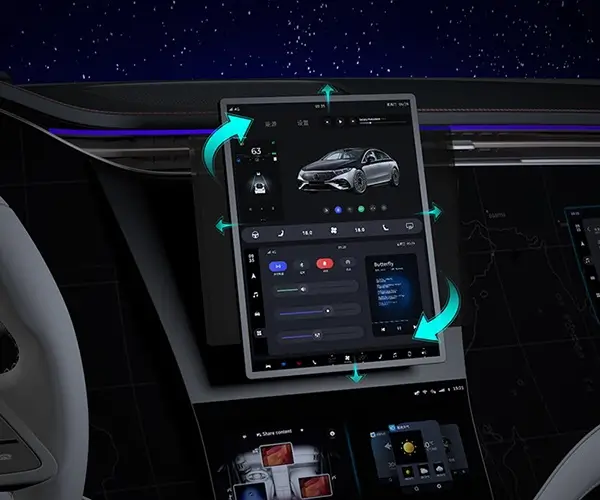Imagine a tiny motor that punches way above its weight—a device small enough to fit comfortably in your hand, yet powerful enough to bring movement and life to your robotic creations. That’s the SG90 servo motor: a miniature marvel that has captured the imagination of hobbyists, students, and engineers alike. Whether you're just dipping your toes into robotics or developing complex automation systems, the SG90 offers an accessible, affordable, and reliable solution.

The Appeal of the SG90
What makes the SG90 so popular? Its compact size—roughly 23mm x 12mm x 29mm—makes it incredibly versatile for projects where space is limited. Despite its petite stature, it boasts a surprisingly robust torque of around 1.8 kg/cm at 4.8V, which is enough to control arms and other moving parts in small robots or automated systems. The lightweight design, often weighing less than 10 grams, ensures it doesn't weigh down your prototype or project, making it suitable for airborne applications like drones or prosthetic devices.
Cost is another key factor. The SG90 is notably affordable, often priced under a few dollars, making it accessible for students and hobbyists. Its simplicity and ease of use mean that even newcomers can integrate it into their projects without the steep learning curve associated with more complex motors.
Understanding the Technical Basics
At the heart of the SG90 is a coreless DC motor combined with a gear train—usually plastic gears—paired with a precise potentiometer-based control system within a packaged unit. This setup allows for very accurate position control, which is why these servos are often used in RC (radio-controlled) applications and robotics.
You control an SG90 by supplying it with a pulse-width modulation (PWM) signal via microcontrollers like Arduino. The length of the pulse determines the servo’s position—say, 1 millisecond corresponds to 0°, and 2 milliseconds corresponds to 180°, with intermediate values allowing for smooth, variable movements. This simplicity has made the SG90 the darling of DIY enthusiasts who want to animate, automate, or add interactive features to their projects.
Applications Galore
You might be surprised how adaptable the SG90 is, despite its size. Hobbyists love it for building robotic arms, pan-and-tilt camera mounts, or even small animatronics. Educators incorporate it into STEM curricula to illustrate fundamental principles of electronics and mechanics in a hands-on way.
In robotics, you might find multiple SG90 servos working in harmony to create articulated limbs or complex sensor systems. Its fast response time—usually in the range of 0.1 seconds for a 60° move—allows for dynamic applications where responsiveness is key.
For artists and designers, the SG90 enables kinetic sculptures, automated lighting controls, or creative interactive displays, transforming static installations into lively, evolving artworks.
Why the SG90 Stands Out
Compared to larger or more sophisticated servo motors, SG90's simplicity makes it more approachable. It doesn't require elaborate power supplies or complex drivers. A basic microcontroller and a few lines of code are enough to bring your project to life.
Moreover, its durability and predictable performance make it suitable for continuous use in various environments. While it's not waterproof or shockproof, proper handling and careful mounting can extend its lifespan. Plus, the plastic gears, although lightweight, require gentle treatment to prevent stripping—a small trade-off for its affordability and convenience.
Getting Started with the SG90
Embarking on your robotics journey with the SG90 is straightforward. Most beginner kits include these servos, along with necessary accessories like control boards, batteries, and instructional guides. Connecting an SG90 to an Arduino, for example, involves just a few steps:
Power the servo via a 5V microcontroller output (ensuring the current capacity is sufficient). Connect the signal wire (usually yellow or white) to a PWM-capable pin. Attach the ground wire (brown or black) to the common ground.
From there, writing a simple program to command the servo into specific positions becomes a matter of a few lines of code.
The Future of Small-Scale Servos
As technology advances, servo motors like the SG90 continue to evolve. Manufacturers improve durability, torque, and precision while maintaining affordability. The rise of 3D printing and open-source hardware encourages a new generation of creators to experiment with compact, reliable motion control.
The SG90 remains a trusted starting point: a tiny piece of engineering that unlocks endless possibilities when you’re ready to explore the fascinating world of robotics and automation. Whether you're aiming to build a simple automated curtain or developing a robotic pet, this little servo packs a punch that can turn your big ideas into reality.
Leveraging innovations in modular drive technology, Kpower integrates high-performance motors, precision reducers, and multi-protocol control systems to provide efficient and customized smart drive system solutions.




































